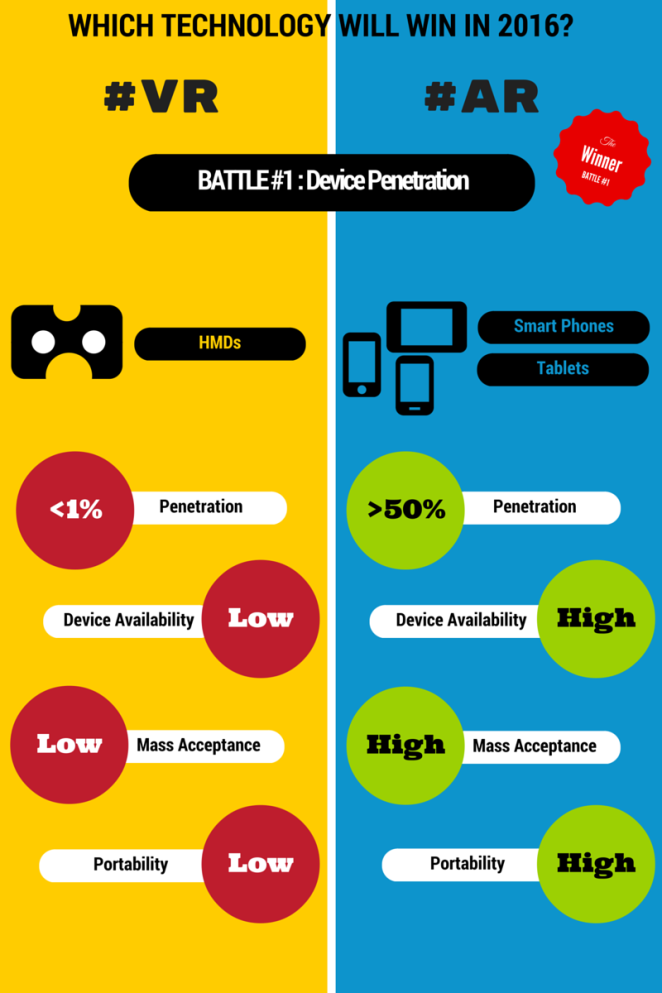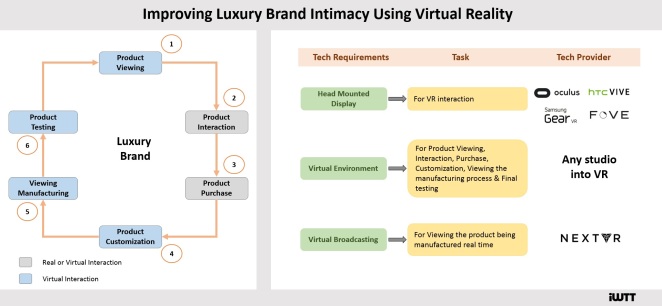2015 saw Virtual Reality (VR) and Augmented Reality (AR) taking center stage when it came to product announcements and new technology introductions. The key question now is which of these will gain the upper hand in 2016. I have broken down this war between VR & AR as several battles. The first among these will be for Device Penetration. I feel this will be the number one reason for either of the technologies to gain dominance in 2016.
When we talk of device penetration we look at all the devices that will purely support VR or AR. Devices for AR can be any consumer device having a screen and camera, at present smartphones and tablets are the best platforms for AR. When it comes to VR, I have considered only head mounted displays (HMDs), as they are considered to give advanced immersive VR experiences, compared to plain VR viewers.
Now let us see how both the hardware platforms fare in terms of various parameters which help in improving their penetration:

- Hardware Penetration: On the VR front HMDs have less than 1% penetration. The major reason being no hardware vendor has come out with a commercial grade HMD. Most are still in development stage and might hit the markets only after mid 2016. The ones which have been launched, still need a lot of improvements in terms of usability. On the other hand for AR at present the basic hardware platform is already in existence with consumers, namely the smartphones and tablets. These devices have a market penetration greater than 50%. This gives AR a very massive advantage in reaching consumers compared to VR.
- Device Availability: At present not many HMDs are available out there in the market for consumers to use. Most of the hardware are in developmental stages and have not taken off commercially. Even the ones that are available is currently restricted to gaming and this again restricts the wider use of VR headsets.
- Mass Acceptance: VR as a technology has not yet been widely accepted by the masses. It is still in the very early stages of being explored and fine tuned. As a result of this, one won’t find people buying HMDs off the shelf in electronic stores like they buy smartphones and tablets, neither will you see people using HMDs on a daily basis at homes or offices. AR on the other hand is being introduced to the consumer as an alternate use case of their existing mobile devices like smartphones and tablets. When people see alternate and innovative uses of hardware they own, the acceptance and need to embrace the new use case is higher. This is helping AR gain mass acceptance and a wider foothold in the consumers’ daily life.
- Portability: Device portability will be another major point in pushing the penetration of the hardware in the market. Most of the HMDs used for VR experiences are bulky and not that easy to carry around when compared with a smartphone or a tablet that can be pocketed easily. This gives AR the edge to be always present in the consumers’ hands when he/she needs to use it through their mobile devices. VR Viewers like Google Cardboard or DODOcase on the other hand are more portable and being used by consumers to get the initial immersive experience, of course with the help of their smartphones.
These four points clearly give AR the lead over VR when it comes to Device Penetration and we have a clear winner in this battle for now.
